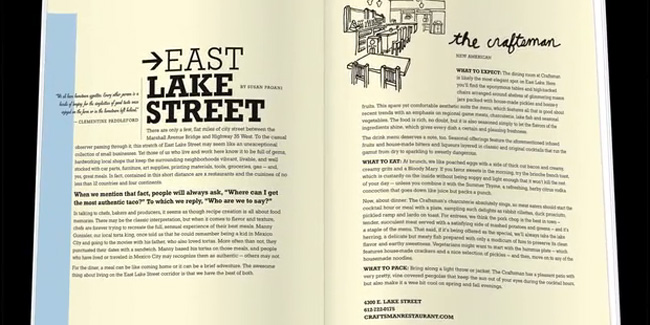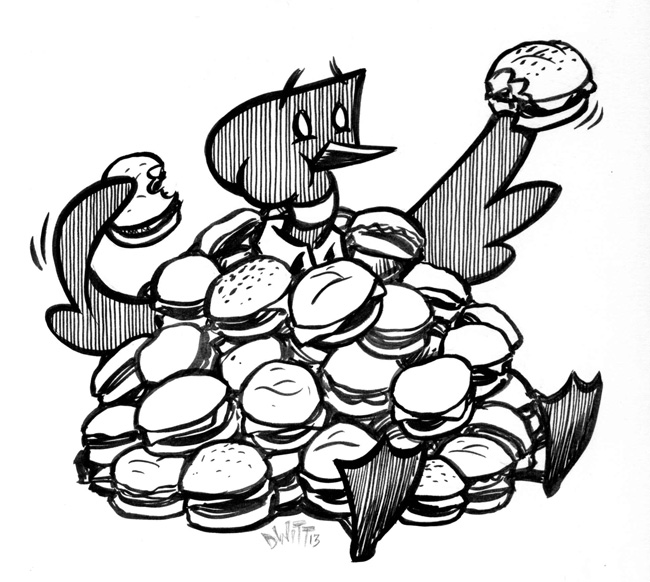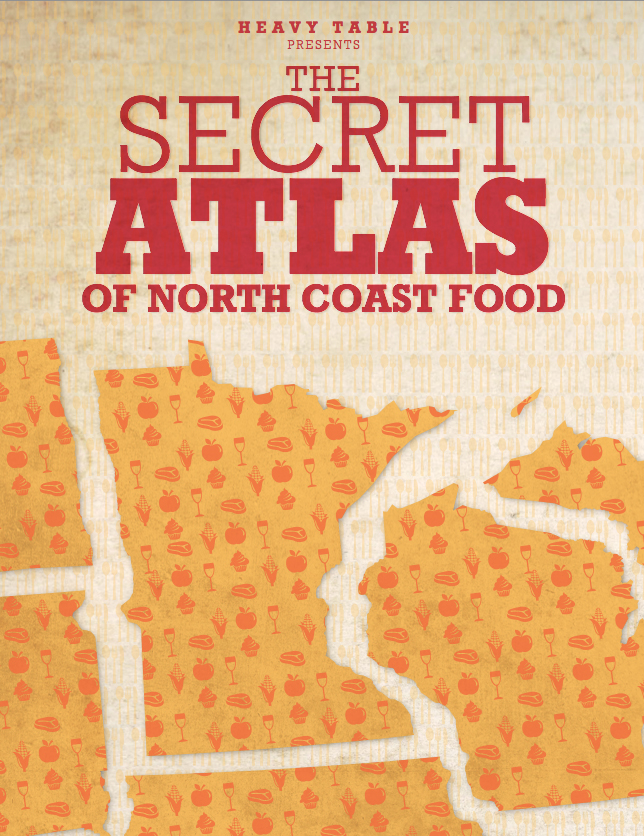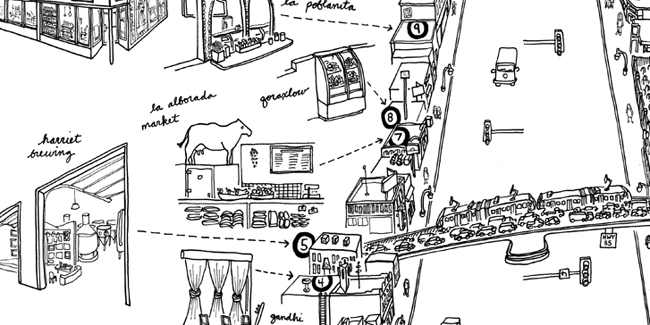 In two previous installments, we shared with you eight chapters from the upcoming Secret Atlas of North Coast Food. We’ll have a couple of maps from all of our backers’ map points (learn more over at the Kickstarter), bringing us to a total of 10 chapters revealed so far.
In two previous installments, we shared with you eight chapters from the upcoming Secret Atlas of North Coast Food. We’ll have a couple of maps from all of our backers’ map points (learn more over at the Kickstarter), bringing us to a total of 10 chapters revealed so far.
Today’s installment brings us to 16.
Our Kickstarter still has a few days left, so please back the project and help us reach our $20,000 stretch goal (which will see the total number of chapters jump from 20 to 24!).
The Senses on Central
written by Peter Hajinian, illustrated by TBD
This chapter will chart a sight, sound, smell, touch, and taste for the variety of restaurants and grocery stores (ethnic and co-op) along Central Avenue in NE. It might start at the river and Hennepin (to include places like Kramarczuk’s and Nye’s) and extend up to the edge of Columbia Heights (the Ecuadorian restaurant Chimborazo, on 29th and Central is the last restaurant before Minneapolis turns into Columbia Heights).

The Cheeseburgers of West 7th
artist and writer David Witt
My theory is this: You can throw all kinds of things on top of a burger to make it better, which can easily hide the fact that it’s not a very good burger. My goal is to try every basic cheeseburger along West 7th and rate / describe them all: type of bun, toasted or not, cheese variety and amount, thickness of beef patty, how well done the beef is, condiments added (if any), and overall satisfaction. All eating establishments are on board, and I’ve even eaten a McDonald’s and a Burger King cheeseburger after many, many years of abstaining. That’s my plan, and I’ve got a bunch more cheeseburgers to try.
Feasting in the BWCA
written by Alyssa Vance, illustrated by Matt Dooley
Often, the best meals are not necessarily the fanciest. This map will tell the stories of locals and out-of-staters who have feasted memorably in the wilderness of Minnesota (particularly in the BWCA).

The Midwest Grape Culture Map
written by John Garland, illustrated by Matt Dooley
The early European explorers who traversed the upper Mississippi documented native grapes growing along the river by the thousands. They predicted vast tracts of vineyard would cover the area and that foreign powers would be wise to control what would soon be a wine production mecca.
Three hundred plus years later, none of that had happened. Only in the last 20 or so have we seen serious inquiry and capital invested into wine production in the Midwest. What took so long?
This chapter will explore the popular myths and actual reasons behind the reluctant wine culture of the Upper Midwest. It will discuss the various immigrant groups who established wineries and the farming practices and historical events that aced out grape growing. It will touch on the scientific hurdles of growing good wine grapes in this climate and feature some of the people who are on the leading edge of viticultural research today.
The map will show data on vineyard density among the upper Midwest states, and points on the map will further discuss important wineries, historical spots, people, and places in Midwest wine culture.
A Battle in the People’s Pantry: The Co-op Wars
written by Sarah Burt, illustrated by Jeff Nelson
In the ’60s and ’70s, while the giants of processed food were stamping their economic imprint on the Twin Cities metro area, a subtler but more revolutionary market was forming at the neighborhood level. Although direct access to local produce and bulk food may have been the first step in the farm-to-table movement, it was fraught with political strife. A clash emerged between “middle class hippies” who started the first food cooperatives and the “C.O.,” a group of citizens concerned with the working class having access to affordable food. Discover where the physical, bloody battles took place in South Minneapolis and where the co-ops we know today emerged.

Six Degrees of Separation
written by Emily Schnobrich, illustrated by TBD
This essay will begin with the career path of a chef and / or the lifespan of a restaurant and trace its web of connections to other chefs and restaurants. For example, it might open with a profile of a chef and his first restaurant. This might lead to another chef who once worked for the first, and then later opened his or her own place, and so on.
Data might include the number of years a chef has worked at a certain restaurant, the physical distance from one restaurant to another, how far (in miles) a chef’s career path has taken him or her from its source, even types of dishes that have crossed from one restaurant to another via different chefs. The essay might also include noteworthy bartenders, sommeliers, bakers, and servers, depending on what I discover.


